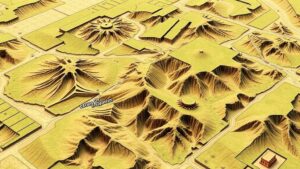Exploring Pirate Legends and Historical Accounts to Find Treasure Coves
Exploring Pirate Legends and Historical Accounts to Find Treasure Coves
The lore surrounding pirates has captivated the imagination of many for centuries, with tales of hidden treasures and secret coves becoming entrenched in popular culture. This article explores the historical realities and legends associated with pirate treasures, detailing specific instances where pirate activities led to the establishment of treasure coves. Through examining documented accounts, archaeological evidence, and related myths, we aim to uncover the complex nature of piracy and its connection to hidden treasures.
The Historical Context of Piracy
Piracy has existed since antiquity, with documented activities as early as the 14th century B.C. in the Mediterranean Sea. But, the Golden Age of Piracy, which stretched from the late 17th century to the early 18th century, marked a peak in pirate activity, particularly in the Caribbean. According to the American Museum of Natural History, it is estimated that over 2,000 pirate ships operated in this region during that time.
The rise of European colonial empires facilitated the spread of piracy. Many pirates targeted merchant ships carrying valuable goods. The economic impact of these actions cannot be overstated; for instance, the British East India Company lost enormous amounts of money due to pirate raids in the Caribbean, sparking increased naval patrols and eventually leading to the establishment of anti-piracy laws.
Legends of Treasure and Their Origins
- Captain Kidds Treasure: One of the most famous pirate stories is that of Captain William Kidd, who was tried for piracy in 1701. Legend has it that Kidd buried treasure on Gardiners Island, New York. Despite extensive searches, no significant treasure has been found, leading to further myths about its existence.
- Blackbeards Loot: Edward Teach, known as Blackbeard, terrorized the American colonies in the early 18th century. He reportedly hid treasure in various locations, including Ocracoke Inlet, North Carolina. Several treasure hunts have taken place, with mixed success; nonetheless, the lore continues to lure adventurers.
Documented Cases: Real Treasures Found
While many treasures remain unaccounted for, some have been discovered in the wake of intense research and archaeological digs. For example, the wreck of the Nuestra Señora de Atocha, a Spanish galleon that sank off the coast of Florida in 1622, yielded approximately $450 million in gold and silver when discovered by treasure hunter Mel Fisher in 1985. This case demonstrates that historical and archaeological research can yield tangible successes in the search for pirate treasures.
Also, the shipwreck of the Whydah, a pirate ship commanded by Black Sam Bellamy, was discovered off the coast of Cape Cod in 1984. Artifacts recovered from the site included gold and silver coins, jewelry, and other objects, validating the historical accounts of the ship and its captain. Whydahs discovery has provided valuable insights into the life of pirates during the Golden Age.
The Role of Cartography in Treasure Hunting
Cartography has played an essential role in tracking pirate activities and locating potential treasure sites. Many pirates created maps to mark the locations of their loot buried in hidden coves. The most famous of these maps is the buried treasure map legend, which often features intricate symbols and directions.
A notable case is the Treasure Map of Merloc, attributed to an unknown pirate, discovered in the 18th century. This map allegedly leads to buried treasures in the Bahamas. Researchers utilized technology such as GIS (Geographic Information Systems) and satellite imagery to analyze potential sites based on this map, leading to recent explorations.
Challenges in Treasure Hunting
Treasure hunting is fraught with challenges, including legal hurdles, environmental concerns, and the difficulty of accurately interpreting historical accounts. The laws governing treasure hunting vary globally; some countries safeguard their underwater heritage strictly, while others allow limited searches.
Plus, the historic narratives surrounding pirates often mix fact with fiction, complicating efforts. For example, the story of Frogs Cove–a supposed pirate hideaway that has not been verified–illustrates how legends can mislead treasure seekers.
Conclusion and Actionable Takeaways
Exploring pirate legends and historical accounts provides exciting opportunities to unearth treasure cove locations. The mix of historical fact, legend, and modern technology allows researchers and treasure hunters to continue delving into maritime lore.
To wrap up, those interested in finding pirate treasures should consider the following actionable steps:
- Conduct thorough historical research using academic texts and primary sources.
- Use technology such as GIS for site analysis based on historical maps.
- Be aware of legal constraints and obtain necessary permits for treasure hunting.
- Collaborate with archaeologists to ensure respect for historical sites and artifacts.
While the quest for pirate treasure is fraught with uncertainty, understanding the history and legends surrounding piracy can lead to fascinating discoveries and new insights into a captivating aspect of maritime history.
